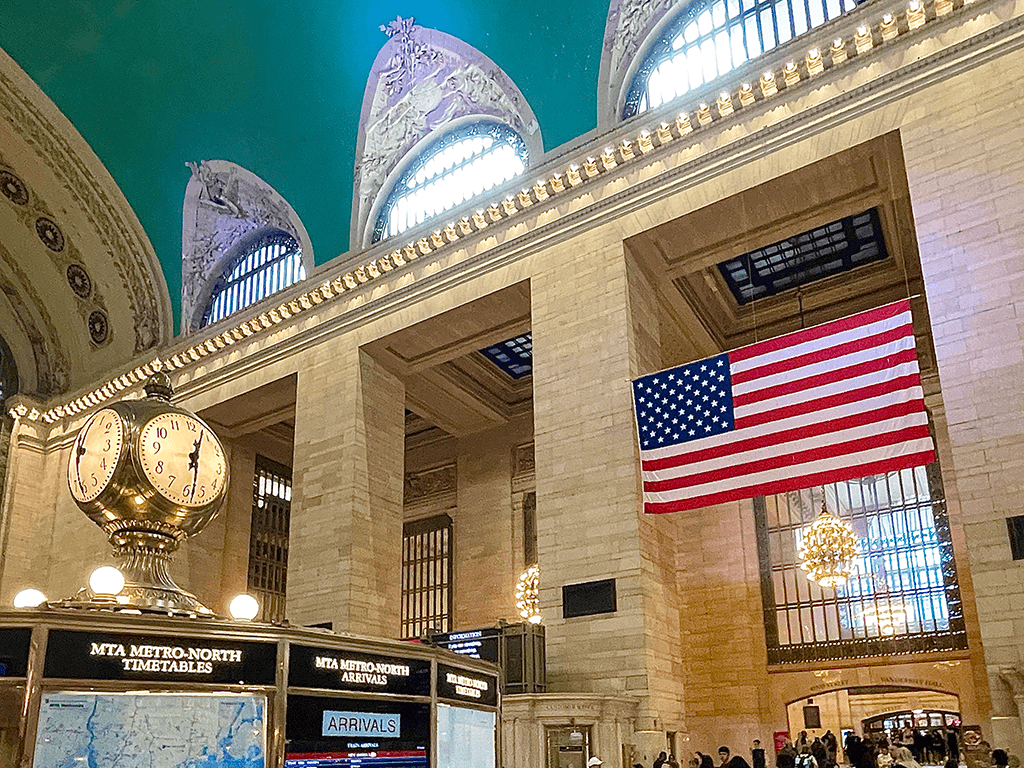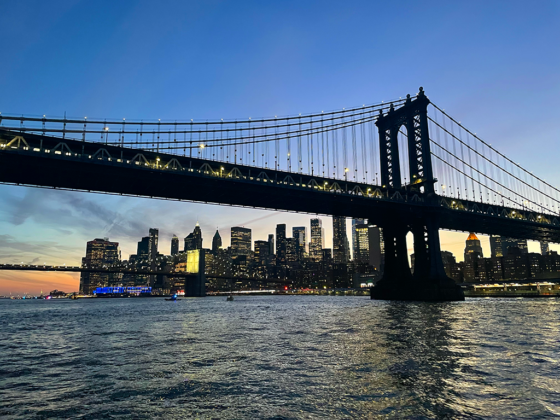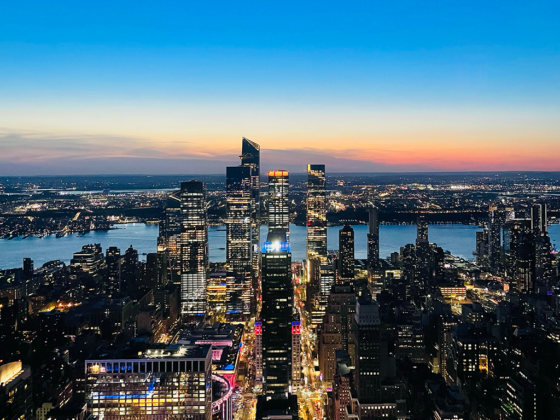New York, with its cosmopolitan bustle and glittering skyscrapers is a dream destination for many travellers. Planning a trip to the Big Apple can be as fascinating as it is complex.
In this article, we give a number of practical tips to make the most of your experience in New York, avoiding the most common pitfalls.
Required documents: e-passport, ESTA and health insurance
Before leaving for New York, it is important to check that you have all the necessary documents for your trip. For foreign nationals, you will need a valid passport with an expiry date that extends beyond the duration of your stay in the United States. In addition, a visa or a ‘replacement’ document such as an ESTA may be required. Finally, another crucial factor to consider when travelling to the US is to take out adequate health insurance. Read our article New York: necessary documents to find out more.
It is useful to check the Viaggiare Sicuri website before travelling, to check the specific entry requirements for each country and to be aware of changes in entry requirements to the United States so as to avoid any inconveniences during your trip.
Internet connection
To always have access to the data connection on your phone, the simplest and most convenient solution is the eSim. These are virtual sim cards – so you do not need a physical sim to replace yours – designed for data connection only and therefore do not allow you to make calls. They are not associated with a number so the number remains the same but with a second data plan active with access to the internet connection on the move.
There are platforms that allow it to be purchased online, from the comfort of home and before departure, without having to go to a shop. All you have to do is select the destination, the data package and its duration, and the date on which you want to activate it. Once you arrive at your destination, simply disconnect your sim’s data connection and activate the eSim’s data connection.
We used Holafly, one of the best known and, in our opinion, most convenient platforms. Read our article on eSims to learn more.
Getting around by Metro in NY
The New York Metro (MTA), with its extensive network of tracks stretching throughout Manhattan and beyond, is an absolutely necessary means of transport for anyone wishing to make a worthwhile visit to the city.
There are 26 lines available and each individual line can correspond to an average of three trains (marked by numbers and letters) that pass through more than 400 stations on more than 240 miles of track. To make navigation more intuitive, each line is associated with a specific colour, which is used to identify both the metro maps and the signs inside the stations. The underground covers a specific route through the five main boroughs of Manhattan, Brooklyn, Queens, the Bronx and Staten Island.
The very first thing to learn is how to figure out which direction to take. In New York, in fact, the direction is not indicated by the two terminuses of departure and destination but only by two labels common to all lines: Uptown & Queens (northbound, towards Central Park) and Downtown & Brooklin (southbound, towards Battery Park). Moreover, although many entrances allow you to access the platforms of both directions in some cases (explicitly specified by the signs) the entrances are dedicated to one direction only.
Another important distinction is between Local Trains and Express Trains serving the same line. Local Trains are slower vehicles, because they make all the stops on the route; Express Trains are faster, but only make a limited number of stops. Again, this is explicitly stated on the signs and also by consulting the various stops on Google Maps it is easy to work out which line to take. Finally, also bear in mind that, after 10.30 p.m., the Local Trains no longer run and are replaced by the Express Trains.
Below are the different types of tickets for accessing Metro New York:
- Single ride ticket: valid for one ride on the metro or buses. The cost is $3 and must be used within 2 hours. Inside each station, there are vending machines, you can get it there.
- OMNY (One Metro New York): is a contactless payment system, which allows you to pay using credit cards, debit cards or compatible mobile devices. To use it, simply bring your card or device close to the OMNY reader in underground stations or on buses. With this method there are discounts on the cost of a single ride, but you can save money by reaching the weekly Fare Cap of about 12 rides, the next ones are free.
- MetroCard: is a rechargeable card that can be used for the metro and buses. It can be recharged in self-service machines directly on the metro or at authorised kiosks around the city. There are two types: the Pay-per-Ride MetroCard, which saves money as each ride costs $2 .75 instead of $3, and the Unlimited-Ride MetroCard with a fixed price and duration and unlimited travel.
How to get from the airport to downtown Manhattan?
The city has three airports, all of which can be reached by various means.
The John Fitzgerald Kennedy International Airport is New York’s main airport, as well as one of the busiest in the country, and is located in Queens, near the border with Brooklyn. It is approximately 31.4 km from the centre of Manhattan.
- Airtrain + underground JFK AirTrain to Jamaica and Howard Beach + underground E to Midtown Manhattan, A to Brooklyn and Lower Manhattan. Cost: AirTrain $8.00 (€7.30) + underground $3.00 (€2.75);
- By taxi the fixed rate is $52.00 (€47.70), plus tips and taxes in total about $70.00 (€64.20). The journey time is about 45 min;
- By NYC Express Bus lines (stops at Grand Central, Times Square and Port Authority in Manhattan). The average cost is $6.75 (€6.20).
In contrast, the Newark-Liberty International Airport, located in Newark, New Jersey is about 28 km from the centre of Manhattan.
- By Airtrain+ Path AirTrain to the airport train station; Path red line to Downtown. Cost: AirTrain $7.75 (€7.10) + Path $1.75 (€1.50)
- By taxi, the average cost varies between $50.00 (€45.90) and $75.00 (€68.80) and the journey time is 35 minutes.
Finally, the smallest, Fiorello LaGuardia Airport, in Queens, where domestic US or Canadian flights arrive. It is 15 km from the centre of Manhattan.
- By bus line M60. The cost of the ticket is $2.75 (€2.45);
- By taxi, the average cost is $45.00 (€41.30) and the journey time about 40 minutes.
Passes: which ones to use?
On a trip to New York, the number of attractions and activities to do is enormous. Here, more than in other cities, the use of passes can be really convenient. The options are varied and the choice depends a lot on the number of activities you want to visit and the number of days you are going to stay. The advice is to make a list of everything you want to visit, with the relative prices, according to the days and make a comparison with the price of the various passes considering the attractions included.
We used the Go City Pass because it seemed the most comprehensive option for what we wanted to visit. It allows access to almost all the attractions, the most famous museums (we visited the MoMa and the Museum of Natural History), all the viewing terraces (the Empire State Building, the Top of the Rock, the One World Observatory and The Edge are not to be missed) and the ever-present Statue of Liberty. It also offers various guided tours, cruises and bike rentals in Central Park. The price varies depending on the number of days, from 1 to 10. If you plan to visit a lot of attractions, the New York Pass offers great value for money.
Another popular and affordable option is the New York City PASS. It includes access to five of the city’s major attractions, 2 fixed and 3 to choose from: the Empire State Building, the Natural History Museum as fixed attractions and 3 to choose from the Statue of Liberty, the Circle Line cruise, the Guggenheim Museum, the Top of the Rock, the 9/11 Museum or the Intrepid Museum.
Go New York’s Explorer Pass gives you the flexibility to choose a predetermined number – 3, 4, 5, 7 or 10 – of attractions from a list of more than 95 options that includes all the classics such as museums, the Empire State Building, the Top of the Rock, the One World Observatory, Edge, the Statue of Liberty and various guided tours and cruises, as well as bike rentals in Central Park. At the time of purchase, you only choose the number of attractions that will count during your trip by showing your voucher.
Luggage storage
Managing luggage during a trip can become complicated, especially when the city you are visiting is only an intermediate stop on a multi-day trip, if it is a long stopover or when you want to make one last trip between checking out of the hotel and departure. In these situations, the luggage storage service becomes essential.
In New York, a variety of options are available for temporarily leaving luggage behind, including services offered by hotels, airport depots and specialised services in the city.
Hotels usually offer guests luggage storage, free of charge or charge a fixed or hourly rate, depending on the hotel’s policies.
Airports are often a convenient choice for baggage storage, especially when you have a long stopover between two flights. La Guardia airport does not offer this service. JFK is the best because it has facilities available in terminals 1 and 4. Costs vary depending on baggage size and time, but are usually between $4 and $18 per day. Some terminals offer 24-hour service, while others have limited hours. Newark offers more limited service and only to United Airlines passengers, near Terminal C. Costs vary depending on weight and number of bags, but usually range between $5 and $16.
In addition, there are many luggage storage facilities near major tourist attractions and public transport, such as Penn Station, Times Square, the Empire State Building, Central Park and many others.
Bounce is a service that has thousands of affiliates around the world, including mini markets, coffee shops, hotels and even in New York you will find plenty of locations near you where you can leave your bags. The service is inexpensive and very easy to use, simply log on to the site, select the location and once you have chosen the number of suitcases, day and time you can proceed to pay.
Travel Tips
Power sockets and voltage
In New York, sockets are standardised on the US electrical system. Type A sockets are the most common and have two flat pins, while type B sockets add a third round pin. An adapter for power sockets is essential. Universal adapters are larger than plug adapters, but fairly compact and there are also versions with USB inputs, which are always needed.
In New York, the voltage of the power supply is also different: 110V, with a frequency of 60hz, unlike in Europe, which uses 220V, with a frequency of 50hz. By now, most devices have a power supply that works with a voltage between 110 and 240V and a frequency of 50/60 Hz. To check that chargers and hairdryers also work in America, just look at the label: if they say ‘input 100V-240V 50/60 Hz’ they will work.
Time zone
New York is in the time zone EST (Eastern Standard Time) during winter and EDT (Eastern Daylight Time) during summer due to Daylight Saving Time. This means that it has -6 hours difference with Italy during daylight saving time and -5 hours difference with during standard time.
Tipping
An unwritten law that is followed to the letter in New York is to leave a tip after using a service. The practice of tipping in New York is entrenched because in some areas workers may be paid less than minimum wage, relying on tips to make sufficient income. Not respecting this local practice can be considered rude and inconsiderate.
- In restaurants, the common practice is to tip between 15% and 20% of the total, depending on how satisfied one is with the service.
- In taxis, the default tip is calculated with options of 20%, 25% and 30%, but it is possible to change it or add an extra sum.
- Hotel staff, such as bellboys who help with luggage or housekeepers, are expected to tip about $2 to $3 per bag and $2 to $5 per day, respectively.
- Tour guides are also tipped. If the group is large and the visit is short, a tip of $5 per person is appropriate. If the group is smaller and the visit lasts several hours, a tip of about $10 per person is more appropriate.
All in all, after taxes and tips, prices may be 15-20% higher than those first quoted.
Last modified: 13 June 2025




